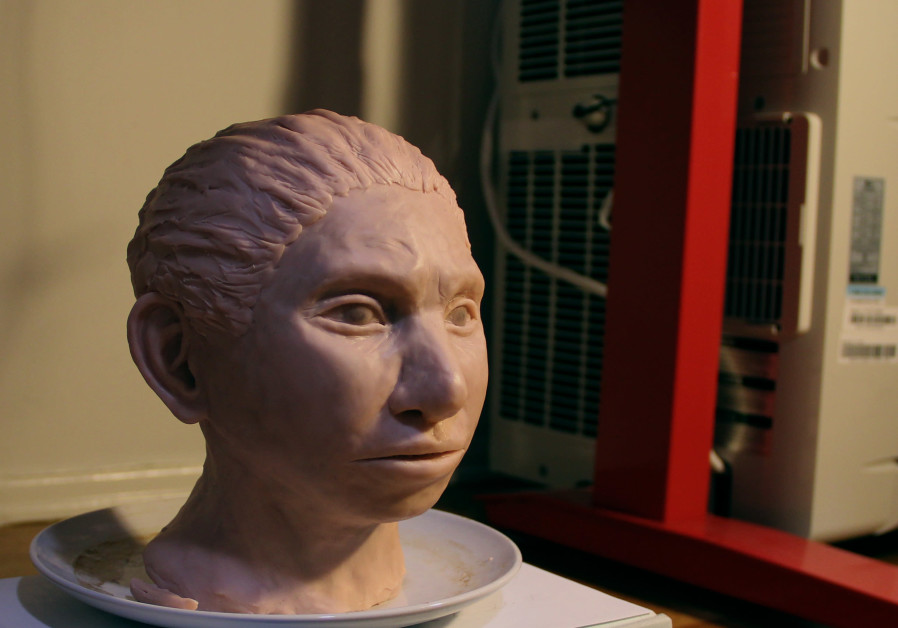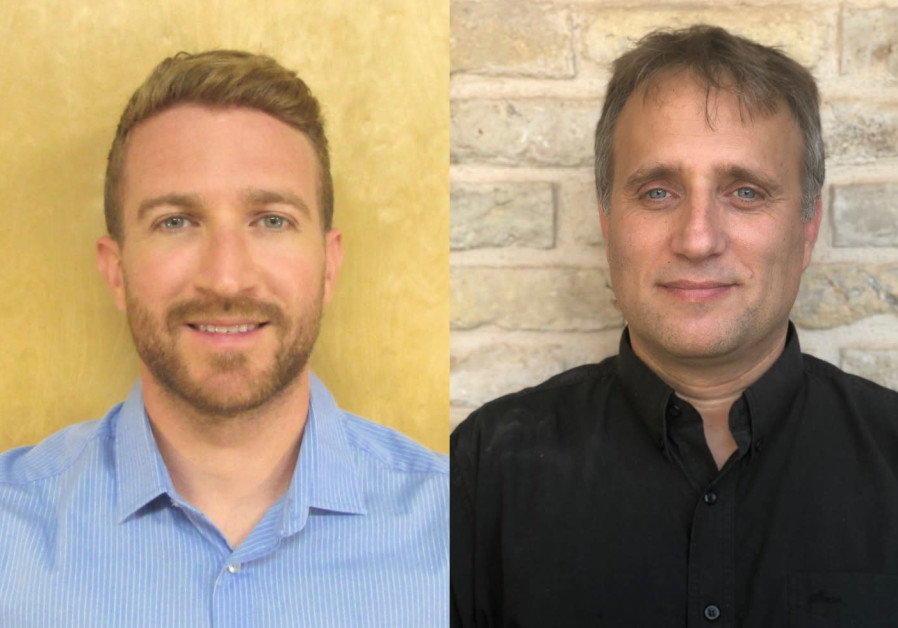
Portrait of a female Denisovan teen. (photo credit: MAAYAN HAREL)
Meet “Denise,” the first reconstructed anatomical profile of what, until now, were considered the mysterious Denisovans, a group of archaic humans.
She was revealed on Thursday by researchers at the Hebrew University of Jerusalem. The team who managed to recreate her profile say that long-term, their research shows possible strategies that could be taken for forensic applications.
Denisovans lived in Siberia and Eastern Asia before going extinct approximately 50,000 years ago, said Hebrew University researcher Prof. Liran Carmel, who led the study. But exactly what Denisovans might have looked like had previously been anyone’s guess. Since their original discovery in 2008, researchers had only three fossils to work with: a bone from the tip of “Denise’s” pinkie finger, a few teeth and a recently found lower jaw bone.
The researchers were able to reconstruct the Denisovan profile over a three-year period by examining patterns of methylation in their ancient DNA.

DNA methylation is a process by which methyl groups are added to the DNA molecule, thereby changing the activity of a segment of DNA. “Methylation provides ample information on gene transcription,” Carmel explained.
By studying Denisovan DNA methylation maps and comparing them to those of Neanderthals – another group of archaic humans who went extinct in Europe about 40,000 years ago – as well as ancient Homo sapiens, the team was able to understand what the differences might mean to Denisovan anatomical features, based on what is known about human disorders in which those genes lose their function.
“We got a prediction as to what skeletal parts are affected by differential regulation of each gene and in what direction that skeletal part would change – for example, a longer or shorter femur bone,” said Dr. David Gokhman, now a postdoc at Stanford, who also worked on the project.
Carmel said it is very difficult to get an anatomical profile from a DNA sequence: at most, scientists and forensics teams can tell basic details, such as whether the person has dark hair or skin. DNA methylation, however, allows researchers to make much more detailed anatomical predictions.

The team was able to prove about 85% accuracy of their model by using the same methodology to create anatomical models of Neanderthals and chimpanzees, which have known anatomical profiles.
“One of the most exciting moments happened a few weeks after we sent our paper to peer-review,” Carmel said. “Scientists had discovered a Denisovan jawbone. We quickly compared this bone to our predictions and found that it matched perfectly. Without even planning it, we received independent confirmation of our ability to reconstruct whole anatomical profiles using DNA that we extracted from a single fingertip.”
The researchers found that Denisovans have striking similar methylation patterns to humans. They also found that there are 56 anatomical features in which Denisovans differ from modern humans and/or Neanderthals, 34 of them in the skull.
Past research done outside of Hebrew University showed that up to 6% of present-day Melanesians and Aboriginal Australians contain Denisovan DNA. Further, Denisovan DNA likely contributed to modern Tibetans’ ability to live in high altitudes and to Inuits’ ability to withstand freezing temperatures.
Although Carmel said that “using our method directly for forensic application is currently not possible,” because it is designed to study differences outside the variability of modern humans and police would need to find features within that variability, “DNA methylation may provide much information that could help the police,” with forensic data, according to Carmel.
var cont = `Join Jerusalem Post Premium Plus now for just $5 and upgrade your experience with an ads-free website and exclusive content. Click here>>
`; document.getElementById("linkPremium").innerHTML = cont; (function (v, i){ });
Bagikan Berita Ini














0 Response to "See the face of your 100,000-year-old ancestor - The Jerusalem Post"
Post a Comment